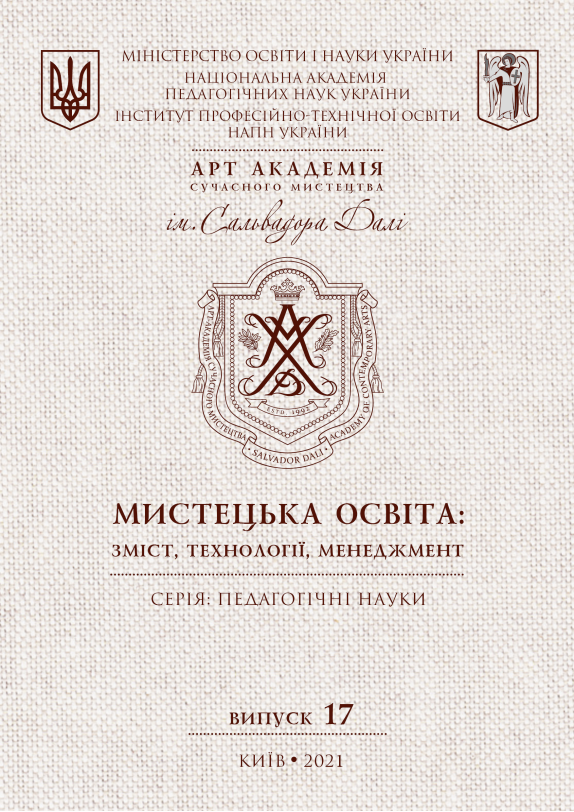FEATURES OF COMICS’ USING AT THE LESSONS OF UKRAINIAN LITERATURE
Abstract
The article identifies the features of the use of comics in lessons of Ukrainian literature in general secondary education. The author of the article substantiates the relevance of the research topic with the requirements of state documents that determine the directions of reforming the educational sector and the need to adapt educational material to the peculiarities of “clip” thinking of modern pupils.
The author considers the comic as a sample of creolized text, which combines verbal and nonverbal components at different levels – semantic, semantic-compositional and semantic-linguistic. Lilik O.O. defines the advantages of comics as a means of learning, offers criteria for selecting comics for use in the educational process, characterizes the current state of publishing comics in Ukraine, provides a list of comics (both works of classical Ukrainian literature and independent works), which should be used in the educational process. The author of the article substantiates the expediency of using comics within the school course of Ukrainian literature at the stages of checking homework, explaining new material, developing practical skills, summarizing, as well as in the context of extracurricular lessons to form values and information culture of students. Lilik O.O. recommends the use of comics during both individual and group work, as well as in the process of implementing educational projects. The author argues that the use of comics in the educational process will promote the development of oral and written speech of pupils, increase their self-awareness, self-control and ability to self-analysis and reflection, as well as intensify the development of students’ creativity through Ukrainian literature.
She offers examples of educational tasks with the use of comics on the material of social and everyday story “Kaidasheva Family” by I.S. Nechui-Levitskii (Grade 10), in particular in the context of the analysis of the plot and composition of the work, the characteristics of the characters in the story as well as recommendations for an extracurricular reading lesson based on modern Ukrainian comics.
References
Видано комікси про кіборгів та донецький аеропорт. URL: https://ua.112.ua/kultura/vydanokomiksy-pro-kyborhiv-ta-donetskyi-aeroport-452265.html. (дата звернення: 15 жовтня 2021 року).
Ісаєва О. Креолізований текст на уроках світової літератури як фактор активізації читацької діяльності. URL: media.ippo.kubg.edu.ua/wp.../isaeva_ kreolizovanyj_tekst.doc. (дата звернення: 02.09.2021).
Історія українських коміксів. URL: https://uncomics.com/ukranian-comics. (дата звернення: 10 жовтня 2021 року).
Колесник О. С. Поетика графічного роману: синтез мистецтв та транспозиції. Актуальні проблеми історії, теорії та практики художньої культури: зб. наук. пр. 2013. Випуск ХХХІ. С. 301-307.
Лілік О. О. Особливості використання креолізованих текстів у професійній підготовці майбутніх учителів української літератури. Мистецька освіта: зміст, технології, менеджмент. 2018. Випуск 13. С. 71-84.
Сонин А. Г. Комикс как знаковая система: психологическое исследование (на материалах франкоязычных комиксов): дис…. канд. фил. наук: 10.02.19. Барнаул, 1999. 236 с.
Ушневич С. Використання медіатехнологій у підвищенні літературної освіти молодших школярів. URL: file:///C:/Users/Admin/Downloads/8586-Текст%20роботи-16148-1-10-20210210.pdf (дата звернення: 13 жовтня 2021 року).
Чикалова Т. Г. Дидактичні можливості використання коміксів на уроках у початковій школі. Інноваційна педагогіка. 2020. Випуск 20. Т. 3. С. 52-55.
Copyright (c) 2021 Ольга Лілік

This work is licensed under a Creative Commons Attribution-NonCommercial 4.0 International License.

